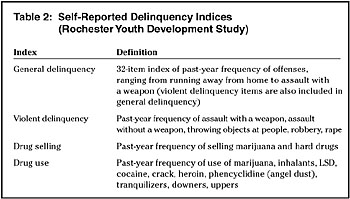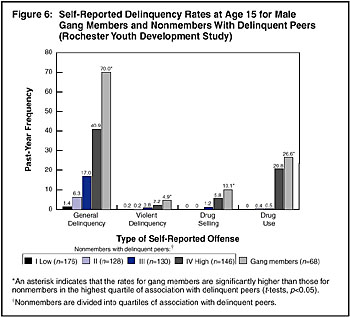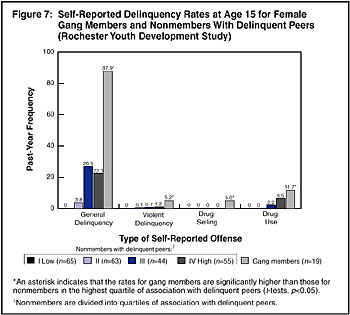|
Rochester Youth Development Project - Methods
Each student was interviewed at 6-month intervals over the course of the middle school and high school years. The data analyzed in this Bulletin were taken from interviews covering ages 14 and 15 for the subjects. Age 15 is near the peak age of involvement for both gang membership and delinquency (Loeber and Farrington, 1998). An analysis strategy similar to that employed with the SSDP data was used to examine the RYDS data. First, the sample was divided into respondents who indicated that they had been a member of a youth gang during the 6 months since the previous interview and those who were not gang members. Second, respondents who were not gang members during this period were divided into quartile groupings based on their responses to the delinquent peer associations scale. Using a 4-point response scale ranging from "none of them" to "most of them," each respondent reported how many of his or her peers were involved in eight delinquent activities. The lowest quartile represents the respondents who had the fewest delinquent peers; the highest quartile represents those who had the most delinquent peers. The division of nonmembers into quartiles allows for a much finer comparison of gang members with nonmembers since the nonmembers in the highest quartile are very heavily involved with delinquent peers. The groups were compared in terms of the frequency with which they self-reported general delinquency, violent delinquency, drug selling, and drug use (see table 2). Comparisons were made separately for males and for females (see figures 6 and 7).

| ||||

